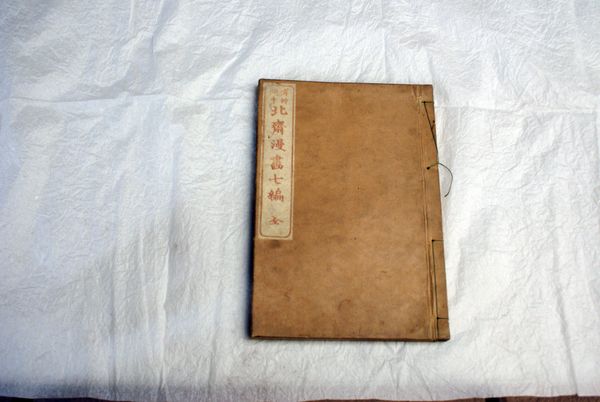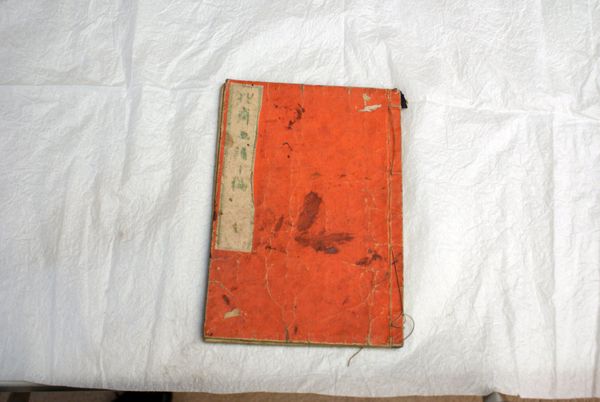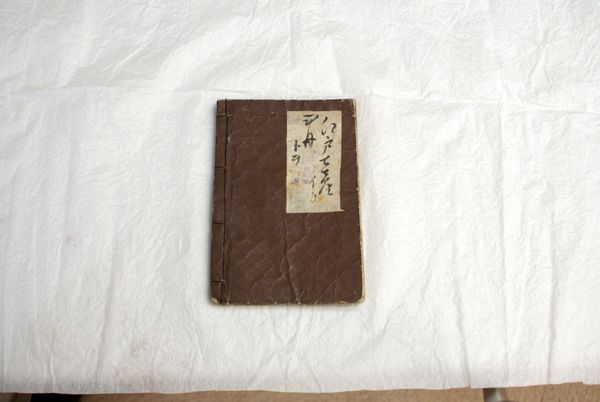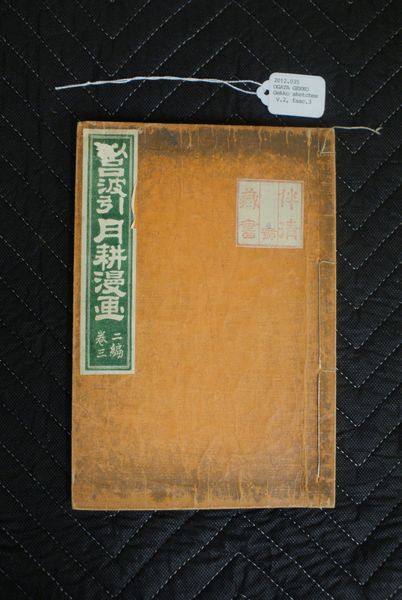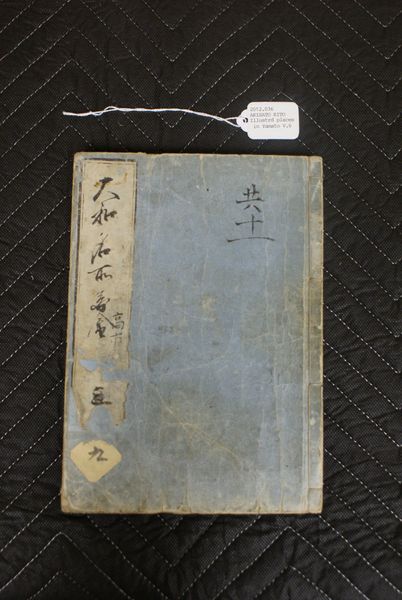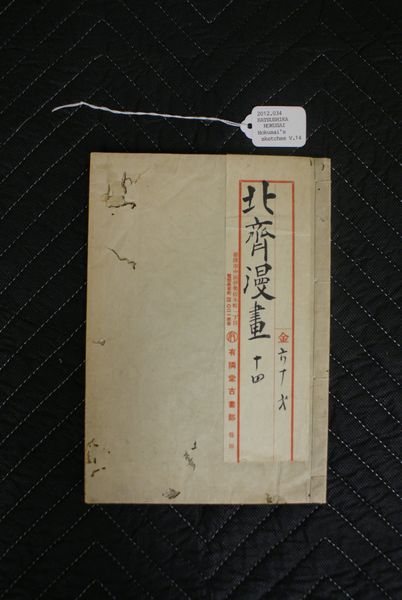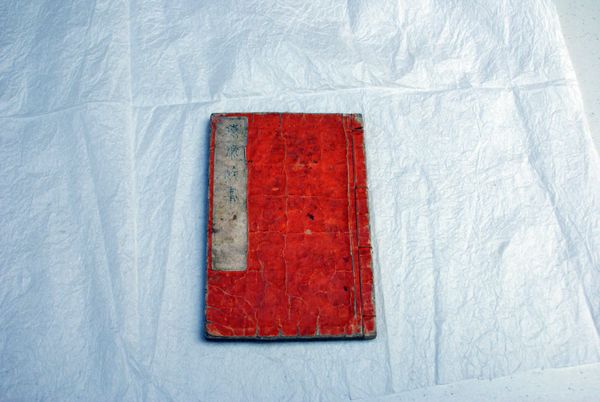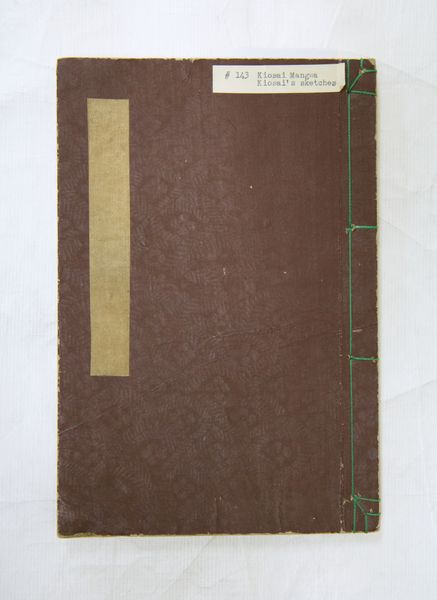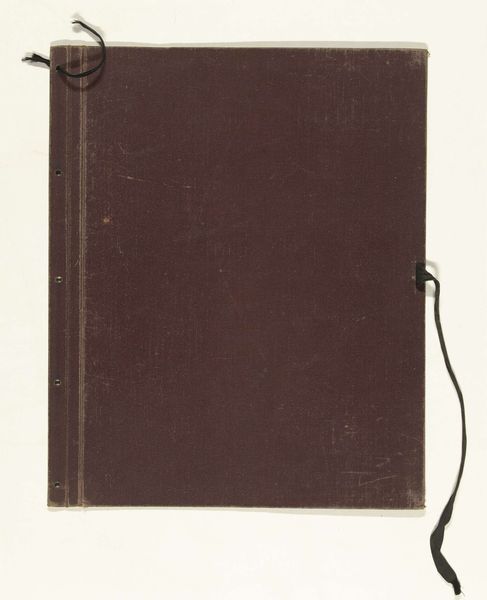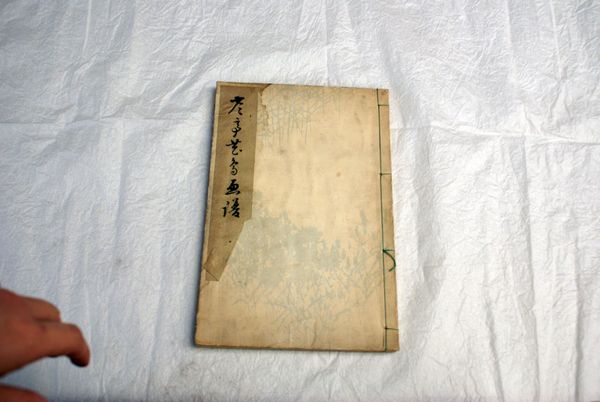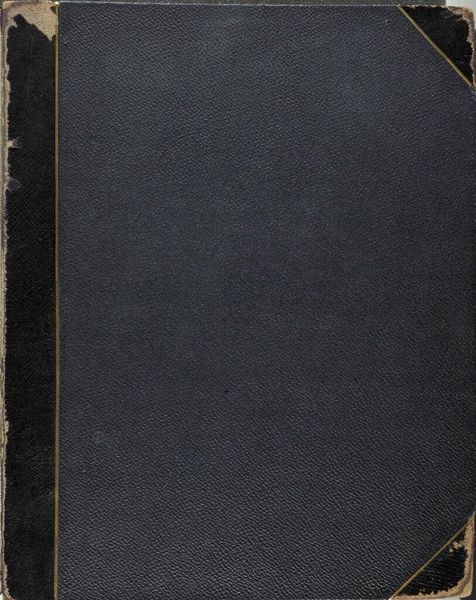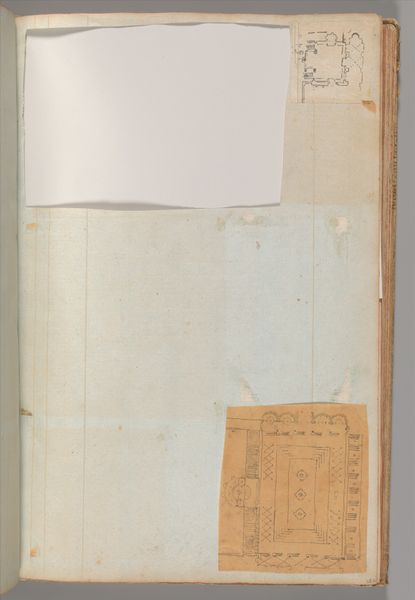
Transmitting the Spirit and Revealing the Form of Things- Hokusai's Sketchbooks 1816
0:00
0:00
ink, color-on-paper
#
photo of handprinted image
#
toned paper
#
water colours
#
worn
#
book
#
japan
#
possibly oil pastel
#
ink
#
color-on-paper
#
coloured pencil
#
underpainting
#
watercolour bleed
#
tonal art
#
watercolor
Dimensions: 8 15/16 × 6 1/4 × 9/16 in. (22.7 × 15.88 × 1.43 cm) (closed)
Copyright: Public Domain
Katsushika Hokusai’s sketchbooks, seen here, were compilations of sketches made in the early 1800s with ink on paper. The initial visual impact of the closed book is one of subtle geometries. The dark rectangular shape of the book contrasts with the rectangular label on its front cover. Together, they suggest a dynamic interplay of form and information. Hokusai's approach to art was deeply rooted in the idea of capturing the essence, or spirit, of his subjects, beyond their mere outward appearance. The sketchbooks are thus repositories where form is rendered in service to essence. He explored how line, texture, and composition could convey not just the look but also the intrinsic nature of his subjects, blurring the lines between representation and abstraction. His vision allowed viewers to engage with the world in new ways. The materiality of the sketchbook, its aging paper, and the wear and tear of time are not just incidental. Instead, it serves as a reminder of the continuous process of interpretation. The form of this book, the way it holds and presents the sketches, becomes part of its meaning, inviting us to think about the relationship between an artist's vision and the structures that contain it.
Comments
No comments
Be the first to comment and join the conversation on the ultimate creative platform.
